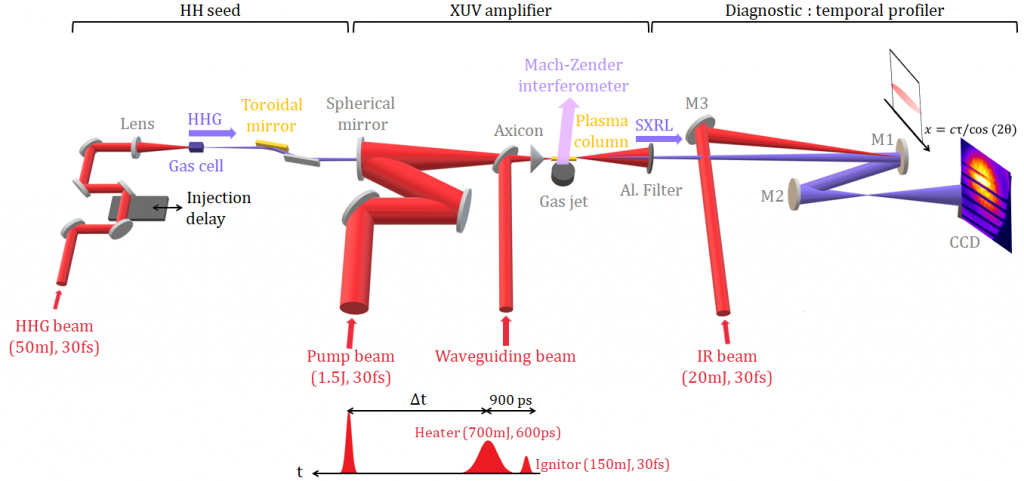Femtosecond soft X-ray lasing in dense collisionaly-pumped plasma
Seeded collisional plasma-based soft X-ray lasers (SXRLs) are table-top sources able to provide energetic pulses with excellent spatial properties. However, their pulse duration have been ranging in the picosecond domain for a long time therefore limiting the field of applications.
In collaboration with researchers from Madrid and Prague, scientists from LOA’s FLUX group have demonstrated the strong pulse shortening of a seeded plasma-based SXRL at high electron densities down to the femtosecond timescale. The pulse duration has been measured to drop from 1.4 ps at 4×1019 cm-3 to 520 fs at 8×1019 cm-3. This reduction is induced by an anticipated interruption of the gain lifetime caused by subsequent collisional ionization.
Measurements have been performed thanks to an innovative temporal diagnostic relying on the irradiation of a soft X-ray multilayer mirror with an intense infrared femtosecond laser pulse in a traveling wave geometry. This original method allows to retrieve any kind of soft X-ray pulse temporal profile in a single-shot with a temporal resolution as short as 200 fs. Experimental results are in close agreement with 3D Maxwell-Bloch calculations, enabling the validation of plasma kinetic codes on a subpicosecond time scale.
Simulations predict even shorter durations at 1020 cm−3, paving the way for numerous applications requiring high intensity soft X-ray pulses to excite or probe ultrafast processes in matter at nanometer scale.
This work has been published in :
Kabacinski et al., Femtosecond soft x-ray lasing in dense collisionaly-pumped plasma, Physical Review Research, Vol. 4, Iss. 3 (2022)
https://doi.org/10.1103/PhysRevResearch.4.L032009




